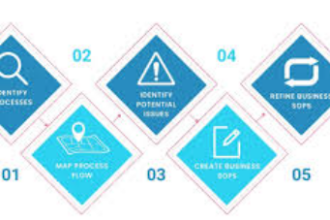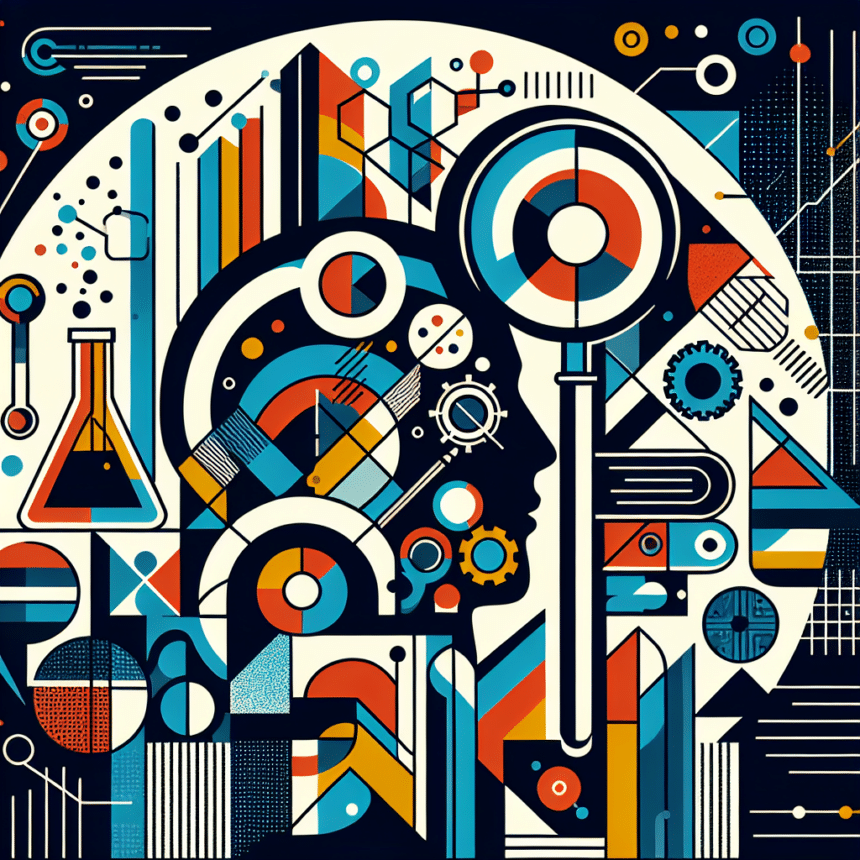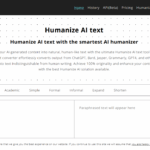In this Article, I will discuss some of the most significant AI systems that are shaking up scientific research.
They assist in the analysis of data, simplification of complicated computations and encouraging new findings.
Scientists can hasten their investigations, get more profound understandings and forecast with higher precision by utilizing more developed formulas together with artificial intelligence.
Key Points & 30 Ai Tools For Scientific Research
| Tool | Key Points |
|---|---|
| TensorFlow | Open-source, flexible, and widely-used for deep learning and machine learning applications. |
| PyTorch | Dynamic computational graph, popular in research, and supports strong GPU acceleration. |
| MATLAB | High-level language and interactive environment for numerical computation, visualization, and programming. |
| SciPy | Open-source library for mathematics, science, and engineering with user-friendly and efficient solutions. |
| Jupyter Notebooks | Interactive web-based platform for creating and sharing documents with live code, equations, visualizations, and narrative text. |
| IBM Watson | AI and data analytics platform providing various AI services like NLP, machine learning, and deep learning. |
| Google Cloud AI Platform | Comprehensive AI and machine learning services for building, deploying, and managing models at scale. |
| Microsoft Azure AI | Cloud-based services with tools for machine learning, data processing, and AI model deployment. |
| AWS AI Services | Machine learning and AI services for building, training, and deploying models on Amazon Web Services. |
| KNIME Analytics Platform | Open-source software for data analytics, reporting, and integration with visual workflows. |
| RapidMiner | Data science platform for building predictive models and performing advanced analytics without programming. |
| Orange | Open-source data visualization and analysis tool for novice and expert data miners. |
| DataRobot | Automated machine learning platform that accelerates data science workflows. |
| H2O.ai | Open-source machine learning platform with scalable and fast algorithms for big data analytics. |
| Databricks | Unified analytics platform based on Apache Spark for big data and machine learning. |
| SAS | Comprehensive analytics software suite for advanced analytics, business intelligence, and data management. |
| Alteryx | End-to-end analytics platform for data preparation, blending, and advanced data analytics. |
| Weka | Collection of machine learning algorithms for data mining tasks, implemented in Java. |
| Caffe | Deep learning framework with a focus on speed and modularity. |
| Theano | Python library for defining, optimizing, and evaluating mathematical expressions involving multi-dimensional arrays. |
| Keras | High-level neural networks API, written in Python and capable of running on top of TensorFlow, CNTK, or Theano. |
| Apache MXNet | Scalable deep learning framework designed for efficiency and flexibility. |
| AllenNLP | Natural language processing library built on PyTorch, designed to support research in NLP. |
| ELKI | Java-based data mining software specializing in cluster analysis with advanced algorithms. |
| Mahout | Scalable machine learning library that implements distributed or otherwise scalable machine learning algorithms. |
| BigML | Machine learning platform providing easy-to-use tools for building and deploying predictive models. |
| Turi Create | Simplifies the development of custom machine learning models for developers. |
| GraphLab Create | Flexible and scalable machine learning platform for data science and analytics. |
| SpaCy | Industrial-strength natural language processing library in Python. |
| Prodigy by Explosion AI | Annotation tool for creating training data for machine learning models with active learning capabilities. |
30 Best Ai Tools For Scientific Research
1.TensorFlow
TensorFlow has a range of tools like TensorFlow Probability that can be used for probabilistic modeling. It also includes TensorFlow Extended (TFX) which helps in creating scalable ML pipelines .

TensorFlow Model Garden which provides access to pre-trained models for physics, biology, climate science, and other domains thus serving diverse needs of researchers across different fields enabling them with powerful methods for their AI projects’ experimentation, analysis and deployment.
2.PyTorch
PyTorch provides various means of achieving success in scientific research such as PyTorch Geometric used when dealing with graph-based learning. Another tool is PyTorch Lightning designed specifically for easy model development while still keeping it powerful enough; additionally.

There’s also PyTorch Hub which allows the collaborative sharing of models between people working on the same project or different projects but within related areas thus opening up avenues for progress in medicine, neuroscience materials science among others that heavily rely on this type of technology; these user-friendly options offer necessary foundations for creativity, replicability and team work during AI-driven investigations.
3.MATLAB
MATLAB has developed a number of tools; among them are the Deep Learning Toolbox which is used in designing neural networks, Machine Learning Toolbox for predictive modelling and Computer Vision Toolbox for image processing.

Therefore scientists can apply artificial intelligence techniques in various areas such as astronomy or bioinformatics thus leading to invention through detailed data analysis and interpretation.
4.SciPy
The AI tools provided by SciPy for scientific research include numerical computing using Scipy library, machine learning algorithms implemented by scikit-learn, and image processing tasks performed with SciPy image.

With these powerful instruments at their disposal physicists chemists environmentalists et cetera will be able to analyze model simulate etc large sets of experimental or observational data enabling further advances towards AI driven science.
5.Jupyter Notebooks
Jupyter Notebooks are among the most important tools for AI in scientific research because they allow code execution, data visualization, and documentation writing to occur within an interactive environment.

It supports several programming languages such as R or Python which enables scientists working with this platform to investigate artificial intelligence algorithms and analyze data as well as share results that can be reproduced while collaborating on different scientific projects.
6.IBM Watson
IBM Watson is also one of these suites of AI tools designed specifically for researchers; it includes Watson Discovery (a tool used for data exploration), Watson Studio (which deals with model development) and lastly but not least important

Watson Assistant (NLP). IBM’s solution makes it possible for big data sets analysis automation process optimization along with speeding up breakthroughs in various domains like healthcare or genetics thanks to its advanced capabilities powered by artificial intelligence. This innovation has led to many discoveries in areas where traditional methods were not effective enough before.
7.Google Cloud AI Platform
Google Cloud AI Platform has a wide variety of AI tools for scientific research, like AutoML for model development and AI Platform Notebooks for collaborative experimentation or BigQuery for big data analysis.

Google Cloud AI Platform makes use of scalable infrastructure along with advanced machine learning capabilities which allows it to empower researchers engaged in different scientific domains to speed up discovery and promote innovation ranging from genomics all the way through climate modeling.
8.Microsoft Azure AI
Azure Machine Learning is among some cutting-edge Microsoft Azure AI tools that can be used during scientific studies where there is need for model training coupled with its subsequent deployment; others are Cognitive Services applicable on natural language processing together with Azure Databricks designed specifically.

Toward collaborative data analytics within an organization. In addition to robust artificial intelligence capability possessed by this system which seamlessly integrates them into other azure cloud services as parts thereof thus enabling users take full advantage such resources thereby leading more enlightened understanding of various fields of science especially those related with medicine even space exploration while still fostering collaboration among scientists themselves.
9.AWS AI Services
Amazon SageMaker for machine learning model creation, Amazon Comprehend for natural language processing, and Amazon Rekognition for image analysis are some of the tools included in AWS AI Services.

Researchers can use these services to analyze data, learn from it and make discoveries faster in any scientific field as they are highly scalable and have pre-built algorithms that can be easily accessed.
10.KNIME Analytics Platform
The KNIME Analytics Platform provides a range of AI tools designed specifically for scientists working within this field; it provides an environment where data can be preprocessed visually before modelling takes place which aids greatly with understanding complex datasets .

Researchers are then able to make predictions about specific outcomes based on their findings so far. This has been shown to speed up innovation significantly across many areas including but not limited to: pharmacology, ecology, materials science
11.RapidMiner
RapidMiner has a set of effective AI tools for scientific research, which are equipped with visual workflows for data preparation, modeling and deployment.
RapidMiner can be used in different areas such as biology, environmental science or healthcare since.

It allows users to discover new patterns from complex datasets through the provision of many machine learning algorithms together with automated processes that generate actionable insights.
12.Orange
Orange is a user-friendly scientific research platform that uses visual programming interface and contains rich library of components for data mining and machine learning.

This program supports interactive data visualization and analysis hence enabling researchers to build predictive models, interpret results and make discoveries in genetics among other fields like social sciences or climate change research.
13.DataRobot
DataRobot offers sophisticated AI tools which can automate the creation of predictive models.

Researchers are able to test complicated data sets for patterns using this software because it has an easy-to-use interface and many options for optimizing models; such insights may spark advances in genetics or drug discovery among other fields.
14.H2O.ai
H2O.ai provides state-of-the-art AI tools designed specifically for use in science labs: H2O Driverless AI builds models automatically while H2O-3 allows machine learning workflows that scale well with large amounts of data.

With multiple algorithms supported plus advanced techniques like feature engineering available as part of its package, researchers have more power than ever before when it comes to working through difficult datasets quickly – which could help them find breakthroughs across many different branches of scientific knowledge from astronomy through epidemiology and beyond.
15.Databricks
Databricks provides a scientific research advanced AI platform that unifies Apache Spark with collaborative notebooks and automated machine learning. Databricks makes it possible for scientists to work with large data sets.

They can develop artificial intelligence models and discover insights by using scalable infrastructure for integrated data processing which in turn allows them to make discoveries in such fields as particle physics, genomics or even climate science.
16.SAS
SAS offers a wide range of AI tools used in scientific research. Among these are SAS Viya for machine learning, SAS Visual Data Mining & Machine Learning for advanced analytics as well as SAS Analytics for predictive modeling purposes. Being powerful statistically speaking while still having an intuitive interface.

SAS enables researchers across various disciplines to analyze their datasets so that they could reveal hidden patterns within them thus making better informed decisions based on this information which will consequently drive progress in scientific research fields like healthcare finance social sciences etc.
17.Alteryx
Alteryx provides tools for science AI that include data preparation, blending, and predictive analytics capabilities. Researchers can preprocess various datasets through the development of predictive models

Derivation of insights that help them discover more quickly in biological findings with drag and drop interface as well as automation features provided by alteryx which are applied in environmental sciences or epidemiology.
18.Weka
Webe is a very friendly platform that supports scientific research with wide-ranging machine learning algorithms as well as comprehensive data preprocessing tools which are supported by Webe .
These interactive features enable the user to explore their data interactively while at the same time evaluating their models interactively too thus allowing them to gain insight from complex datasets.

So that they can come up with better predictions about what might happen next in genetics or ecology or social sciences either way fostering innovation wherever it takes place within those domains.
19.Caffe
Scientific study needs a high-powered deep learning platform to research. Swift model training and deployment for convolutional neural networks are included in this Caffe framework that is made specifically for scientific investigation in AI technology.

By having an adaptable structure alongside GPU optimization, it allows scientists to quickly analyze massive data sets as well as create intricate neural network models which can be used in various areas like astronomy or even medical imaging.
20.Theano
Theano is designed mainly for deep learning but also supports symbolic mathematical expressions useful in scientific investigations; hence it acts as a strong computational framework for researchers.
It has automatic differentiation capabilities coupled with GPU acceleration features which enable the implementation and optimization of specialized neural network architectures by scientists working on different.

NLP tasks or even those involved with material sciences among other fields that utilize such platforms during their AI-driven research projects aimed at driving innovation and discovery next level algorithms can achieve.
21.Keras
Scientific research can be done by using Keras, a friendly deep learning framework that is simple and flexible. It builds on top of TensorFlow and Theano which are both high level APIs for building neural networks.

This allows scientists to quickly prototype models and test different architectures so they can make discoveries faster in fields like bioinformatics, neuroscience or climate science.
22.Apache MXNet
Apache MXNet is an efficient scalable deep learning framework for scientific research. It has a flexible programming interface and supports distributed computing.

With optimized GPU acceleration and model parallelism, large scale neural networks can be trained and deployed by researchers using MXNet which could lead to breakthroughs in medical imaging, genomics or environmental monitoring among others; thus advancing AI-related scientific investigations.
23.AllenNLP
AllenNLP is a platform for natural language processing (NLP) research. It gives modular blocks, pre-built models and state-of-the-art algorithms. AllenNLP also supports deep learning and linguistic annotations.

This makes it possible for analysts to design sophisticated NLP systems, review text-based data and extract insights that will help in driving change within medicine, social sciences as well as the digital humanities.
24.ELKI
ELKI is a framework for open-source data mining used in scientific research. Its main area of specialization involves clustering, outlier detection and spatial analysis. ELKI has various algorithms and data structures designed to ensure scalability and performance are taken into account during operation.

With this tool researchers can deal with complicated datasets; hence they can identify patterns which will enable them gain knowledge on how different things work together thus leading to discoveries in fields such as geoinformatics among others.
25.Mahout
Mahout is a scalable machine learning algorithms and libraries for scientific research that uses Apache Hadoop for distributed computing.
It supports collaborative filtering, classification, clustering among others which allows large data sets to be analyzed by researchers.

Who can also create predictive models and get insights from them thus spurring advancements in bioinformatics, astronomy and social network analysis.
26.BigML
BigML is a cloud-based machine learning platform designed specifically for scientific research which comes with automated model building as well as predictive analytics capabilities.

The software has both supervised and unsupervised learning algorithms hence enabling users to work on complicated datasets.
While still being able to develop predictive models that will help them gain necessary insights faster especially in areas like genetics or environmental science even finance too.
27.Turi Create
Turi Create is a user-friendly platform for scientific research that has pre-built machine learning models and tools to help visualize data. It supports deep learning and graph analytics.

Which allows researchers to tackle complex datasets, create predictive models, find insights into the system’s working – thus enhancing our understanding of biology and other fields such as neuroscience or social networks analysis.
28.GraphLab Create
GraphLab Create offers an extensive framework for scientific research that concentrates on scalable machine learning as well as large scale graph analytics.
It enables distributed computing with advanced algorithms designed to process huge amounts of information at once allowing for pattern

Extraction from graph-structured data while driving innovation across various domains like bioinformatics, cybersecurity or recommendation systems.
29.SpaCy
Scientific investigation can be supported with a powerful natural language processing toolkit called SpaCy, which has fast tokenization, named entity recognition and dependency parsing.

It is possible to analyze texts, extract information from them and get new discoveries in such areas as biomedicine, linguistics or social sciences due to the customizable pipelines support and pre-trained models availability provided by SpaCy.
30.Prodigy by Explosion AI
Prodigy is an annotation tool for scientific research produced by Explosion AI, which makes data labelling and model training easier.
Prodigy helps scientists to label different data sets more effectively and improve the performance of their models step by step using active learning feature.

This leads to breakthroughs in fields like image analysis, NLP (natural language processing) or computer vision where many objects need to be recognized at once.
How To Choose Best AI Tools For Scientific Research?
Efficiency: The greatest AI systems for scientific research can automate time-consuming activities like data analysis, freeing up the scientists to focus on more innovative and evaluative parts of their work.
Accuracy: Tools which are powered by artificial intelligence have the ability to go through massive volumes of information accurately thus reducing chances of mistakes from human beings while ensuring dependable outcomes.
Innovation: Researchers can open up new lines of investigation and reveal previously hidden findings by employing modern cutting-edge AI technologies.
Collaboration: Some AI tools come with features that can help researchers work together more easily; this allows for smooth sharing of data, discoveries, as well as methods among different disciplines or even institutions.
Scalability: When research projects become larger in scale and more complicated in nature; scalability is key for AI tools because it will enable them grow with the needs without having to incur significant overhead costs.
What To Look for In Best AI Tools For Scientific Research
In order to find the most effective AI tools for scientific research, it is important to consider certain things such as; capability of doing advanced data analysis.
Scalability which can cope up with large datasets, friendly-user interfaces, compatibility with other workflows that already exist in place among others
like having a strong support system or good documentation and integration options with different softwares or platforms so that productivity and efficiency may be increased during the research process.
Final Words
To finish, AI tools’ development has entirely changed scientific inquiry as it provides unmatched prospects for new ideas and findings.
Scientists can now solve difficult problems in different areas through these devices by automating tasks, enhancing accuracy of data and promoting cooperation among themselves.
We must adopt the use of Artificial Intelligence technologies if we are to make further progress in this field and realize all its possibilities for the future advancement of science.














